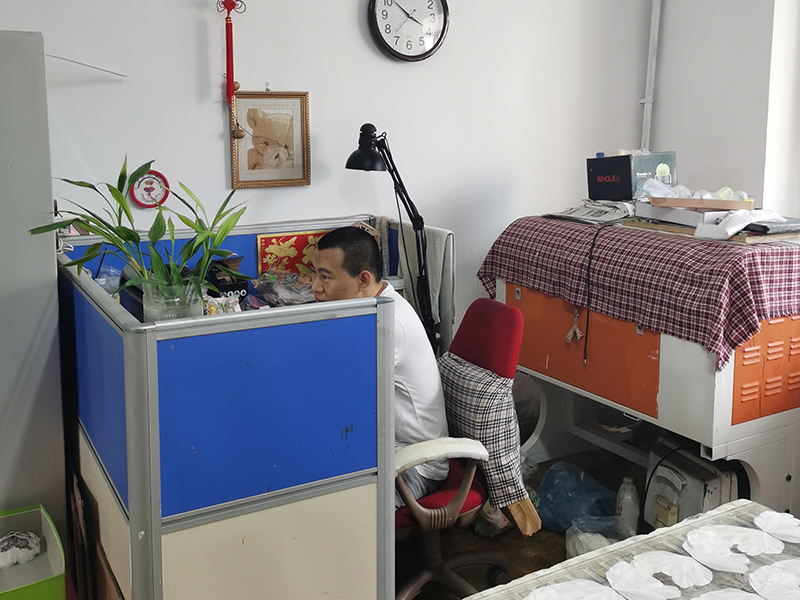The article reads: At present, there are many kinds of processing technologies for fly ash from incineration of garbage, but not all processing technologies can meet the requirements for disposal of fly ash for reduction, recycling, and harmless disposal. For the "Green Hills" ecological civilization policy, the "three" treatment of environmental pollutants is the best choice, and the disposal of waste incineration fly ash is no exception. Garbage incineration fly ash is generated during the incineration process of household waste. During the process of waste incineration, organic matters in waste are mainly discharged as gaseous substances; inorganic substances mainly form solid particles, in which larger particles are deposited on the bottom of the incinerator And on the grate, it is called bottom ash, and those tiny particles float in the flue gas and enter the flue gas purification system along with the flue gas. These particles constitute 50% of the incineration fly ash and the remaining incineration fly ash. It is derived from the limestone or activated carbon added during the flue gas purification process. They are collectively collected in dust collectors (electrostatic precipitators, baghouses, etc.), and there are also some small particles that settle at the bottom of the flue and chimneys. The fine particles that have been captured and settled down are called incineration fly ash. Figure 1 Waste incineration fly ash Incineration of fly ash also has the hazard characteristics of heavy metals and persistent organic pollutants. The incineration fly ash contains heavy metals such as Pb, Cd, Cu, Cr, and Zn that are easily contaminated by water, as well as highly hazardous di-VA and furans, which can contaminate water bodies and soils. Harm to the health of plants, animals and humans. According to the "Household Garbage Incineration Pollution Control Standard" (GB18485-2014) stipulates: "Incineration of domestic garbage, fly ash should be managed as hazardous waste." With the promotion of waste incineration in China, the issue of waste fly ash disposal and resource utilization has received more and more attention. The research on fly ash disposal technology is also deepening. Domestic Common Fly Ash Treatment Technology Cement curing method Cement curing method is currently the most widely used incineration fly ash solidification technology. In this method, the cement and the incineration fly ash are uniformly mixed in a certain proportion of water, and the harmful components such as heavy metals are fixed in a stable mineral structure through the hydration reaction to prevent dissolution thereof, so as to achieve the purpose of stabilization and harmlessness. In order to improve the fixing effect and ensure that cement can effectively complete the hydraulic gelling reaction, it is sometimes necessary to add appropriate additives to the mixture according to the type of fly ash. Cement solidification method requires lower material costs and operating costs, but has the following problems: 1 increased volume of waste after treatment; 2 new landfills are limited; 3 there is a long-term stability problem, special salts and organic matter in fly ash Decomposition can easily cause the cured body to crack, causing recontamination. Melt sintering The melting method is to heat fly ash in the fuel furnace to a high temperature of 1400° C. or higher by using fuel or electric power. The organic pollutants such as Di-VA in fly ash are thermally decomposed, burned, and gasified, while the inorganic substances are melted to form a vitreous melt. Slag, while a part of the low-melting-point heavy metal elements evaporate and be collected, the residual heavy metal elements in the fly ash can be surrounded in the sintered molten glass network or even form a glass network structure, thereby effectively controlling the leaching of heavy metals. Sintering method is to mix the hazardous wastes to be treated with fine glassy materials, such as glass chips and glass powders. After mixing and granulation, the glass is cured at a high temperature of 1000-1100°C to form a glass solidified body. With the dense crystal structure of the glass body, Ensure the permanent stability of the cured body. Melt sintering technology has the advantages of high volume reduction rate, stable slag properties, and no heavy metal dissolution, and the vitrified fly ash can be used as a building or paving material to realize the resource utilization of ash residues. However, its constraining factors are as obvious as its advantages. The technology needs to consume a large amount of energy, the equipment investment is high, and the treatment of high salt-containing secondary ash is difficult. Simulation Oriole garden ornaments decoration Huangli photography props Feather animal Branch Accessories model.Spot special price 3cm Mini feather bird promotion,20-25cm ostrich hair hard pole color high quality ostrich feather scene decoration table lamp ceiling lamp decoration. Shop Window Decoration,Church Window Craft Dies,Window Craft Windows,Stained Glass Window Craft Kit Xintong Craft Gift Co.,LTD , https://www.ychcraft.com


